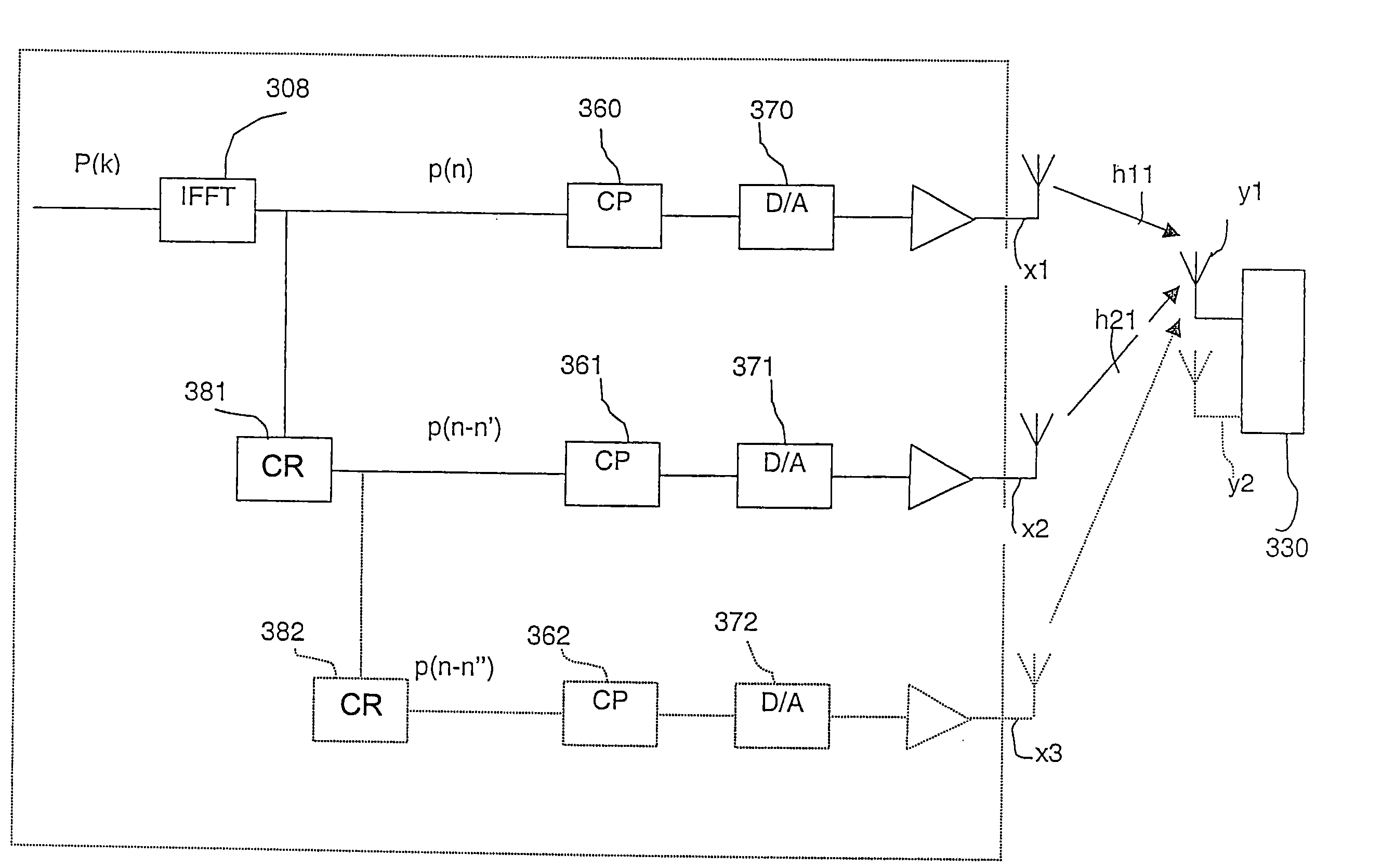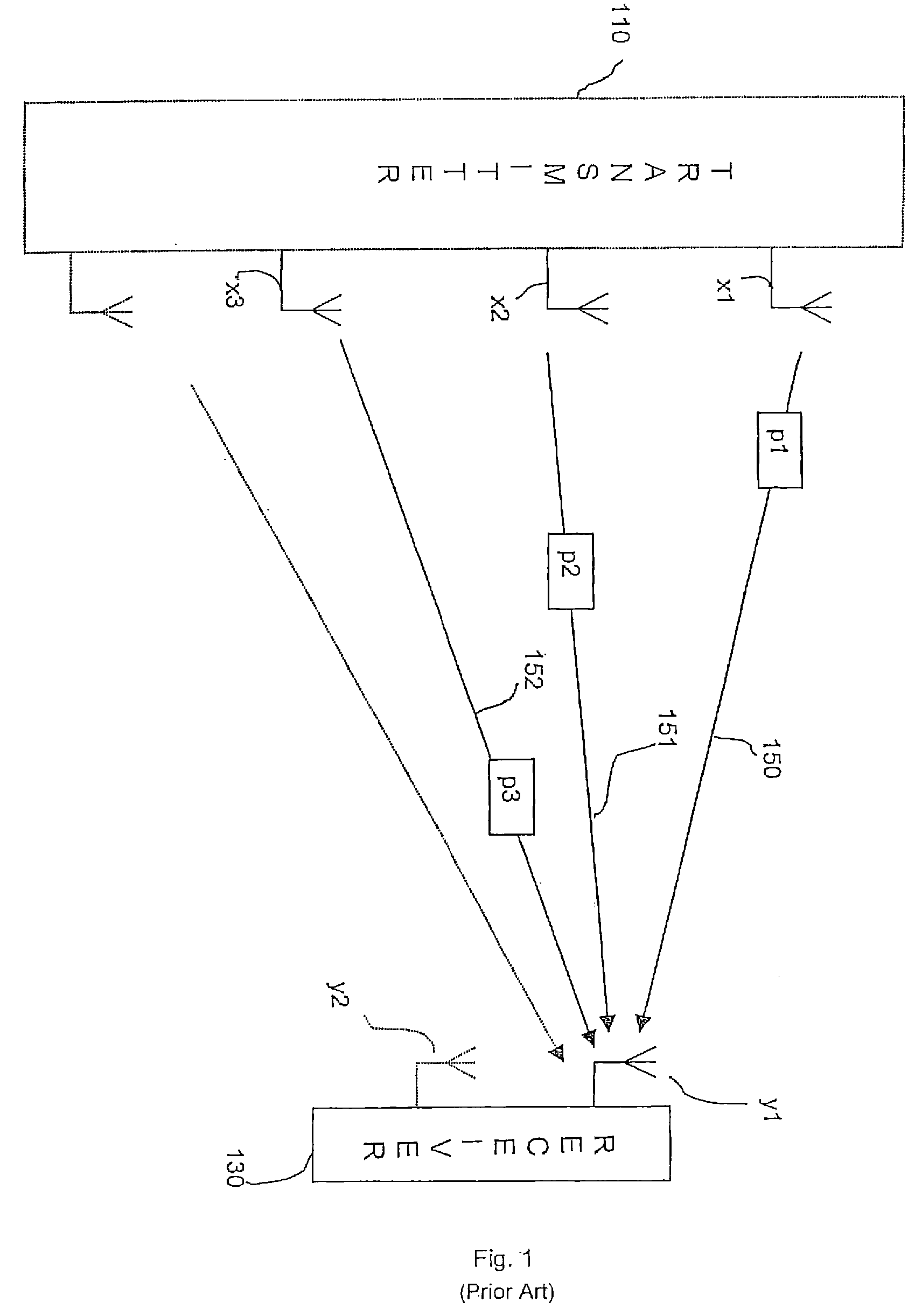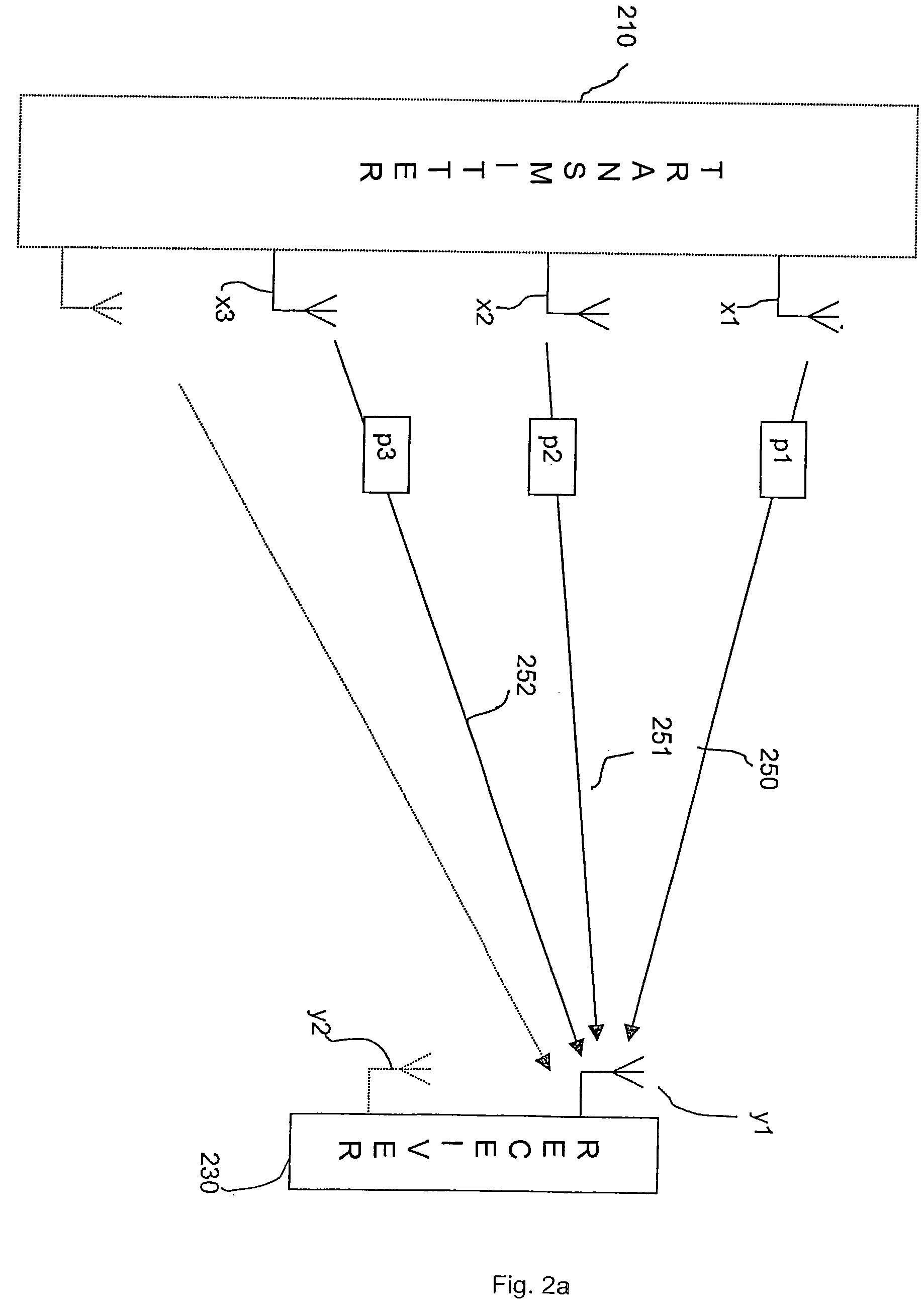Methods and arrangements in a telecommunications system
a technology of telecommunications system and method, applied in the field of communication, can solve the problems of large bandwith consumption of existing methods, high cost of estimation methods, and high complexity of preferred estimation methods, and achieve low peak to average ratio, low cost, and efficient bandwith
- Summary
- Abstract
- Description
- Claims
- Application Information
AI Technical Summary
Benefits of technology
Problems solved by technology
Method used
Image
Examples
Embodiment Construction
[0060]In FIG. 1 is depicted a communication system, wherein training sequences are transmitted sequentially in an OFDM system comprising several transmitting antennas. The training sequences are transmitted in such a way that they do not overlap each other over time. The system comprises a transmitter 110 provided with antennas x1, x2, x3. In FIG. 1, though only three antennas x1, x2, x3 are shown, a man skilled in the art understands that more than three antennas may be used. The system also comprises at least one receiver 130 provided with at least one receiving antenna y1, y2. FIG. 1 illustrates a state-of-the-art approach of performing multiple channel estimates in OFDM. Several training symbols p1, p2, p3 are sent one by one after each other from the different antennas x1, x2, x3 to a receiving antenna y1 on channels 150, 151, 152.
[0061]In FIG. 2a is illustrated a system according to the invention as well as one state of the art method. The system provides a multitude of multip...
PUM
 Login to View More
Login to View More Abstract
Description
Claims
Application Information
 Login to View More
Login to View More - R&D
- Intellectual Property
- Life Sciences
- Materials
- Tech Scout
- Unparalleled Data Quality
- Higher Quality Content
- 60% Fewer Hallucinations
Browse by: Latest US Patents, China's latest patents, Technical Efficacy Thesaurus, Application Domain, Technology Topic, Popular Technical Reports.
© 2025 PatSnap. All rights reserved.Legal|Privacy policy|Modern Slavery Act Transparency Statement|Sitemap|About US| Contact US: help@patsnap.com



